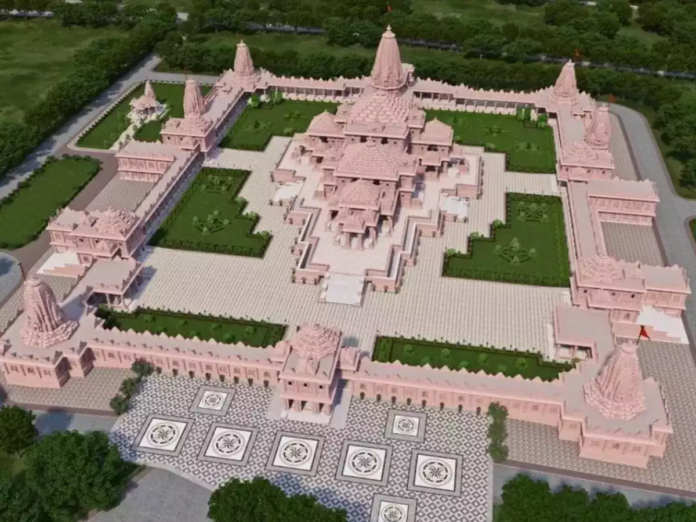
Priyanshi Pareek
The wait is over, the wait of New temples of India in making, Hindu temples which are going to open in 2024 is over as the new year is here.
Those who have no idea regarding this, don’t worry we will provide you, what you have to do is just read out the article.
You might not know about other temples but Ram Janmabhoomi, you all must know, the most awaited temple, is opening on January 22, 2024.
Ram Janmabhoomi, Ayodhya
The site of Ram Janmabhoomi is believed to be the birthplace of Rama, the seventh avatar of the Hindu deity Vishnu, according to the Ramayana. The sacred location is said to be situated on the banks of the Sarayu river within the present-day city of Ayodhya, located in the northern Indian state of Uttar Pradesh.
Hindu scriptures connect the Babri Masjid site in Ayodhya, Uttar Pradesh, to Rama’s birthplace. ASI’s findings reveal a pre-existing Hindu temple beneath the Babri Masjid, including 12 pillars and 263 terracotta idols portraying deities and human figures. These discoveries challenge Islamic non-idolatry practices, creating complexity in the site’s historical narrative.
The demolition of the Babri Masjid in 1992 intensified Hindu-Muslim tensions. The legal dispute reached the Indian Supreme Court, which held hearings from August to October 2019. Ultimately, on November 9, 2019, the Supreme Court mandated the land’s transfer to a trust for constructing a Hindu temple.
History of Ayodhya
Ayodhya, formerly Saketa, boasts a heritage dating back to the 5th or 6th century BC. Nestled along the Sarayu River, it magnetizes pilgrims, history enthusiasts, and tourists alike, drawn by its blend of mythology and historical depth.
According to Hindu lore, Ayodhya served as the capital of the ancient Kosala Kingdom and was revered as Lord Rama’s birthplace. King Dasharatha reigned over this prosperous and harmonious city, succeeding a line of illustrious rulers such as Ikshvaku, Prithu, and Bhagirath.
During the Buddhist era (6th-5th centuries BCE), Shravasti briefly held the kingdom’s capital status, with some scholars linking Ayodhya to Saketa, where Buddha reportedly resided. Over time, Ayodhya evolved into a significant Buddhist hub under the Maurya and Gupta dynasties, witnessing the construction of monasteries and stupas.
Construction
The construction of the Ram Mandir commenced its initial phase under the Shri Ram Janmabhoomi Teerth Kshetra trust in March 2020.Prime Minister Narendra Modi conducted the Bhoomi Pujan ceremony and laid the foundation stone for the Ram Temple in Ayodhya on August 5, 2020.
A segment of the Ram Mandir is scheduled for inauguration and opening in January 2024. The comprehensive project aims to be fully completed by the official deadline of December 2024.
Temple Design
- Total Area: 2.7 acres
- Total Built Up Area: 57,400 sq.ft.
- Length: 360 feet
- Width: 235 feet
- Height: 161 feet
- Number of Floors: 3
- Number of Columns in ground floor: 160
- Number of columns in first floor: 132
- Number of columns in second loor: 74
- Number of Gates: 12
Status Update
A section of the Ram Mandir will be inaugurated and opened to the public in December 2023. It is planned to be completed in December 2023, the official deadline.

